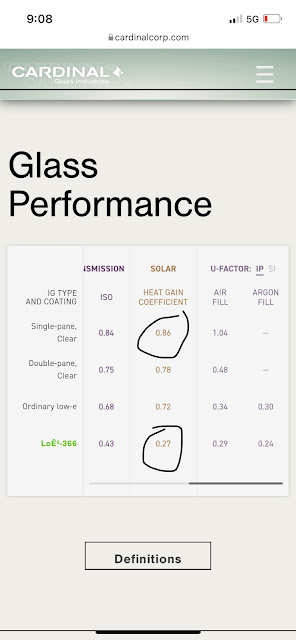Window Ratings: NFRC Explained
Windows Play a Crucial Role in a Homes Performance
If you’ve ever lived in a 100 year old house then you likely know what it feels like to live with old single pane double hung windows. You know the kind that barely slide up (if they aren’t painted shut) and have two beautifully tattered ropes on each side which go into the jamb and are attached to lead weights?
Many of these turn-of-the-century homes were built by highly skilled carpenters who completed every stage of the building process. They were building things to the best of their knowledge and as it turns out, these homes are some of the best built houses still standing today... they just lack the energy efficiency that we now know is paramount to a homes structure and life. These old windows may look pretty with the special grid detail and the wavy glass but they are drafty and let all of the heat right through or out depending on season/temperature.
What is the NFRC (National Fenestration Rating Council) label?
Window manufactures must perform testing to each of their window frame styles and different window operations (casement, single hung, PIC, etc.). This NFRC certified label allows one to see how well a window performs in four crucial areas: U-Factor, Solar Heat Gain Coefficient (SHGC), Visible Light Transmittance (VT) and Air Leakage. Some even test in more categories.
U-Factor:
The U-Factor measures how well a window insulates oneself. It is the inverse of the commonly known “R” Value which measures the insulation level in a buildings envelope (or outer shell). For example a U-factor of .30 (which is technically an “energy star” rated window) has an R value of about 3.33. A higher performing window with a a U-factor of .15 achieves a R value of around 6.66 - which is much better. A typical R value for a 2x6 framed wall with no added exterior insulation will get you around R 19-21. Even with the bare minimum code requirements, windows are by far a buildings worst part of its thermal performance… on the flip side they can be used for heating a house too, especially when integrating them with passive houses, but that’s another topic for a different day. In the end, when looking at the U-factor the lower the number the better as it provides more insulation by reflecting the heat back into your home. Different Low-E (emissivity) coatings provide better insulation than others. Double pane versus triple pane as well as Alpen Windows’s “suspended film” all affect the windows U-factor. The window frame material is also a major component. Aluminum framed windows (even thermally broken) are going to be much less insulating than a fiberglass or foam-filled fiberglass frame. Lastly, the operation of the window affects the U-factor. A stationary window produces a much lower value than say a horizontal slider or double hung would.
SHGC, AKA Solar Heat Gain Coefficient:
This number relates to how well a window reflects the solar heat so that it does not enter your house. In warmer climate zones this is very important to get right (as are the others) otherwise your new windows will still let in a lot of solar heat. I live in climate zone 4 so it’s not as important to block out as much heat as possible, however I have 4 south facing windows so I opted for Cardinal Low-E 366 to achieve a better SHGC.
If you look at this chart below (from Cardinal Glass) you will see a drastic difference between the solar heat gain in a single pane window versus a double pane window with the Low-E 366. Those numbers mean that a single pane glass let’s in 86% of the suns heat whereas the Low-E 366 only lets in 27%. That’s almost a 60% decrease in heat into your home. Think about how much that would ease your mechanical system.
Visible Light Transmittance:
This is the amount of natural light that comes through the glazing. People who live on the bluff in San Diego over looking the beautiful sunsets will most likely want a lower amount of visible light coming through as to not blind them from the sun, especially when it hits the water just right. Low-E coatings block out some of the visible light but the beauty of technology is that it does not block out a majority of the light simultaneously keeping the heat out. There are different glazing options such as grey tinted glass or bronze reflective glass that cut down on the VT more substantially, however these are not too common in homes as you feel like you are wearing sunglasses every time you look out your windows.
Air Leakage
The fourth main category in the NFRC certification relates to how well a window seals. Old drafty windows are rough on the bills/HVAC systems and uncomfortable to live in. You want to aim for the lowest possible number here when looking at windows. Similar to U-factor, the type of window operation used, makes for a wide range of air leakage values. Stationary versus casement, tilt-turn, single hung. Additionally, the type up weather-stripping and gaskets used in window frame will ultimately make or break this category.
Harmony
These four components of a windows performance are critical to understand for all builders, architects, designers and homeowners who are remodeling. The windows and glazing you choose for your home affect how your home functions. They are not only a major design component aesthetically, but they can also be used strategically in the overall building envelope to peacefully co-exist. Choose wisely.




.JPG)


Comments
Post a Comment